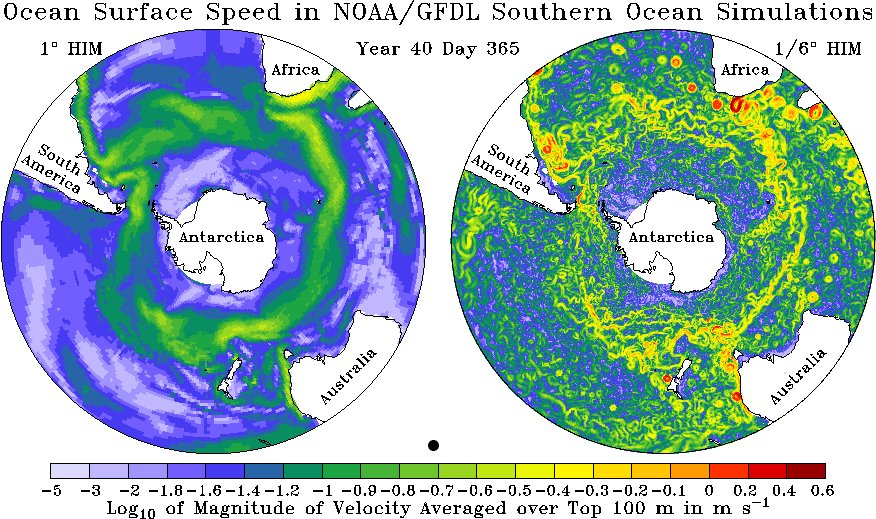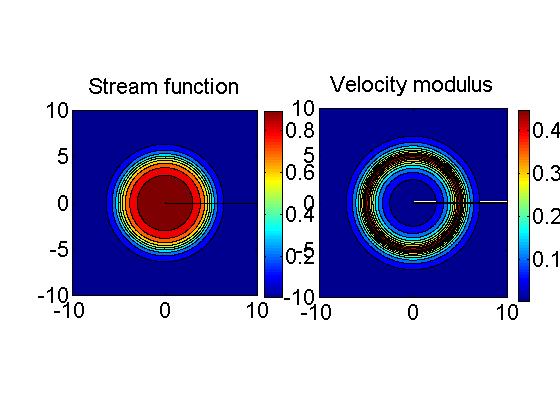Scientific Aims
Statistical mechanics
This project aims at applying and
developing tools of statistical
physics for the study of the statistics of the large scales of
geophysical flows. Even if they are out of equilibrium, we will
consider in a first
part the interest of the equilibrium Robert-Sommeria-Miller theory, in
order to explain partly the self-organization of these flows. This
equilibrium approach is an essential first step but is necessarily
limited. It will be complemented by the development and the use in this
context of the most modern tools of out of equilibrium statistical
physics ; for instance the large deviation theory applied to dynamical
quantities or on a longer term the history thermodynamics (Ruelle
formalism, initially developed for deterministic
systems, but now generalized to stochastic processes).
The Kuroshio current and the Zapiola anticyclone
We will study several important
phenomena for
the large scale dynamics of oceans ; on one hand the bistability of
some
of the western boundary currents like the Gulf Stream, but especially
of the Kuroshio current (east of Japan), and on the other hand the
self-organized Zapiola ocean anticyclone, east of Argentina. Our choice
of these examples has been dictated by their importance for ocean
circulation, but also for their paradigmatic interest as far as
statistical mechanics is concerned. Indeed, the Kuroshio exhibits a
bistability that we will explain by the vicinity of an out of
equilibrium phase transition. The Zapiola is one of the clearest
examples
of self organization close to some equilibrium states, even out of
equilibrium. Then these two problems will be essential for illustrating
the relevance of statistical mechanics tools for ocean dynamics but
also for other types of geophysical fluid dynamics problems.

[From Hallberg-Gnanadesikan - JPO
2006.] A large part of ocean mesoscale variability is explained
by
vortices (rings) of size 100 - 200 km. These rings are present
everywhere in
the ocean. There are for instance visible here south of South Africa
and all along the Antarctic circumpolar current.

Streamfunction and velocity
statistical equilibria, explaining the structure and drift velocity
of ocean rings.
Aims in terms of statistical physics: develop
- Theoretical ideas explaining and predicting in details, the self-organization of these flows, independently of the dynamical complexity,
- New tools (large deviations) allowing to precisely characterize the statistics of the largest scales of these flows,
- The design of models with a lower complexity, reproducing reasonably well the large scales dynamics and statistics and usable in climate problems (which is not the case currently).
Aims in terms of geophysical fluid dynamics:
- Reproduce current bistability in simple situations in laboratory experiments
- Make numerical simulations of the Kuroshio bistability in simple models
- Determine the dynamical mechanics of the Kuroshio
bistability
